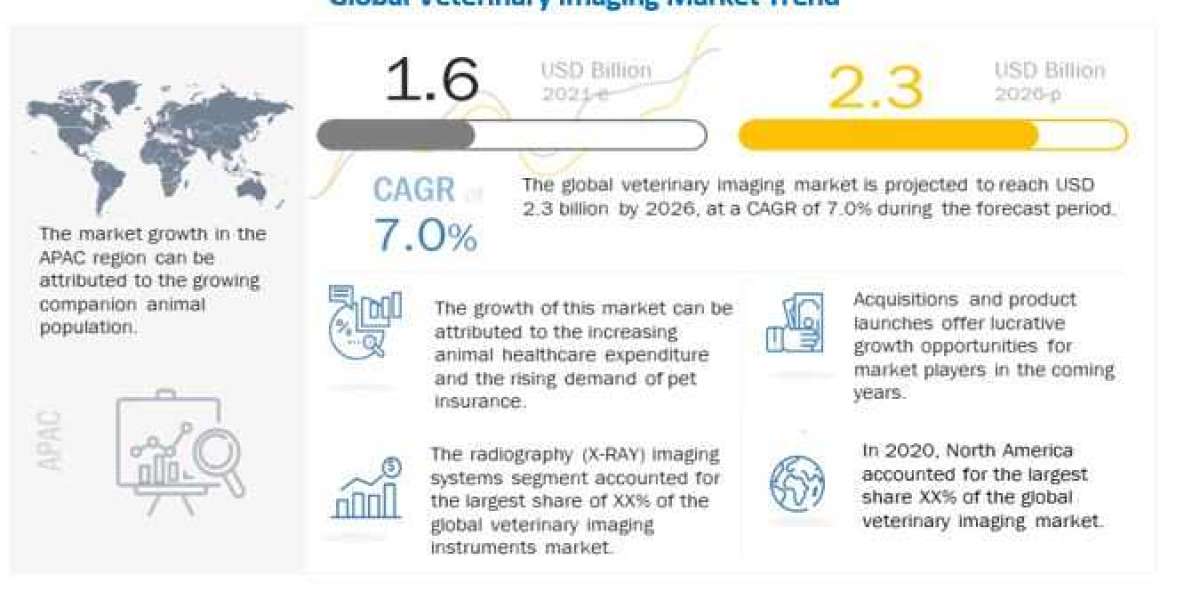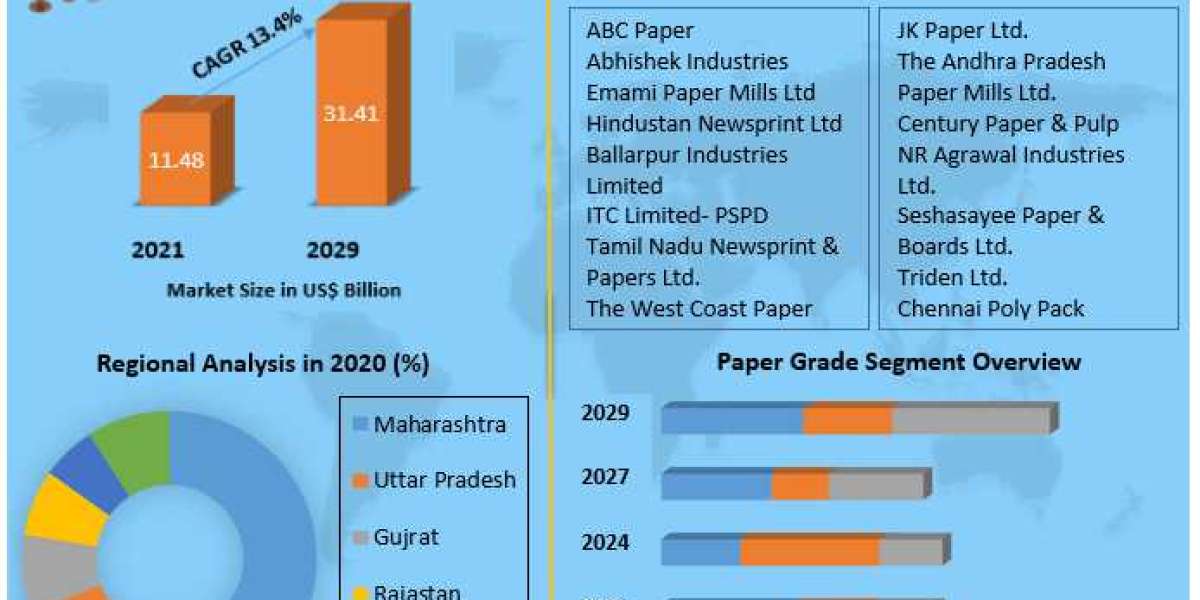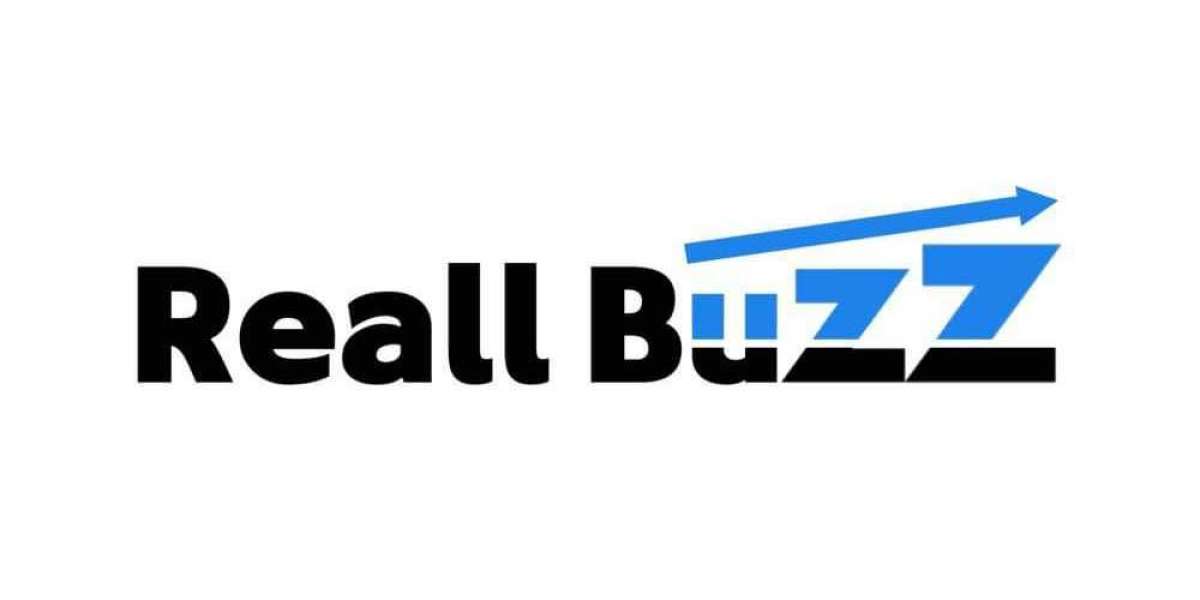Veterinary Imaging Market is expected to reach USD 2.3 billion by 2026 from an estimated USD 1.6 billion in 2021, at a CAGR of 7.0% during the forecast period. Veterinary diagnostic imaging is a non-invasive technique, and it involves the process of creating visual representations of the interior of an animal’s body for clinical analysis, medical intervention, and the visual representation of the function of some organs or tissues. The veterinary imaging market includes different modalities which are used to create images along with reagents (contrast agents) and imaging software.
The global veterinary imaging market offers significant growth opportunities for market players due to factors such as the rising demand for pet insurance, growing animal healthcare expenditure, increasing companion animal population, increasing number of veterinary practitioners and their income levels in developed countries, and the increasing development of innovative products that offer rapid and accurate results. New imaging technologies, such as MRI and CT systems, are expected to witness a slower adoption rate among veterinarians owing to their high price and significant expenditure on maintenance. Also, limited animal healthcare awareness in emerging markets presents a major challenge for their uptake. Moreover, these instruments require skilled technicians to operate and analyze images for accurate diagnosis; the severe shortage of skilled veterinarians is, therefore, expected to limit their adoption
Download PDF Brochure: https://www.marketsandmarkets.com/pdfdownloadNew.asp?id=80889726
Browse in-depth TOC on "Veterinary Imaging Market”
331– Tables
63– Figures
371– Pages
Key Market
The prominent players in the veterinary imaging market are GE Healthcare (US), Agfa-Gevaert N.V. (Belgium), Carestream Health (US), Esaote S.p.A (Italy), IDEXX Laboratories, Inc. (US), Mindray Medical International Limited (China), Canon Inc. (Japan), Heska Corporation (US), Siemens Healthineers (Germany), FUJIFILM Holdings Corporation (Japan), Konica Minolta Inc. (Japan), Samsung Electronics Co., Ltd. (South Korea), E.I. Medical Imaging (US), IMV imaging (UK), SEDECAL (Spain). Other players in the veterinary imaging market are Clarius Mobile Health (Canada), Shenzhen Ricso Technology Co. Ltd. (China), DRAMIÑSKI S.A. (Poland), Epica Animal Health (US), and ClearVet Digital Radiography Systems (US), MinXray Inc. (US), Hallmarq Veterinary Imaging (UK), Shantou Institute of Ultrasonic Instruments Co., Ltd (China), Sonoscape Medical Corp. (China), and Reproscan (US).
The global veterinary imaging market offers significant growth opportunities for market players due to factors such as the rising demand for pet insurance, growing animal healthcare expenditure, increasing companion animal population, increasing number of veterinary practitioners and their income levels in developed countries, and the increasing development of innovative products that offer rapid and accurate results. New imaging technologies, such as MRI and CT systems, are expected to witness a slower adoption rate among veterinarians owing to their high price and significant expenditure on maintenance. Also, limited animal healthcare awareness in emerging markets presents a major challenge for their uptake. Moreover, these instruments require skilled technicians to operate and analyze images for accurate diagnosis; the severe shortage of skilled veterinarians is, therefore, expected to limit their adoption.
Enquiry Before Buying this Reports:https://www.marketsandmarkets.com/Enquiry_Before_BuyingNew.asp?id=80889726
Drivers: Increasing rate of companion animal population
A surge in the overall companion animal population and adoption rate has been witnessed on a global scale. According to several studies, having a companion animal is associated with positive health benefits, such as reduced cardiac arrhythmias, normalised blood pressure, decreased anxiety, increased psychological stability, and improved well-being. Companion animal ownership has increased significantly due to loneliness and the need for companionship that arose during the COVID-19 pandemic. The increasing pet population is expected to drive the demand for pet care products and services, which, in turn, will support the growth of dependent industries such as the market.
Challenges: High cost of veterinary imaging instruments
Veterinary imaging instruments are expensive products. In developed countries, such as the US, Germany, the UK, and Japan, the cost of entry-level console (portable) ultrasound systems ranges from USD 22,000 to USD 75,000. Depending on the number of probes, the price of these systems could increase by USD 30,000 to USD 40,000 (if multiple probes are considered). Advanced ultrasound systems from Esaote and GE Healthcare are priced at a premium. Small portable machines start at around USD 2,000ndash;3,000 and reach up to USD 50,000, with added costs of backup transducer probes going up to USD 1,000 and printers up to USD 2,000 on average. Portable digital handheld ultrasound systems are more expensive than basic ultrasound systems.
Opportunities: Untapped emerging markets
Companion animal ownership has grown significantly across the globe. This is particularly evident in emerging markets in APAC and Latin America due to a rise in the rate of urbanisation and an increase in disposable incomes, which have expanded access to animal healthcare and enabled owners to spend more on pet care.
Historically, the adoption of veterinary diagnostic imaging systems among veterinary practices in these countries has been comparatively less than that in developed markets, such as the US and some European countries. Currently, many veterinary practices in the region are adopting technologically advanced solutions commonly used by veterinarians in developed economies. Thus, with the surge in the companion animal population, the increased demand for veterinary services from the livestock industry, and the growth in the rate of companion animal health expenditure, emerging countries across APAC and Latin America are expected to offer significant growth opportunities.
Many players from international markets are focusing on investing and expanding in emerging countries to ensure long-term revenue growth. They have also started undertaking initiatives to increase awareness about animal health issues and the availability of technologically advanced equipment for veterinary practices. This is expected to drive a greater uptake of monitoring and diagnostic equipment in emerging markets, thereby contributing to the growth of the market in the coming years.
Restraints: Lack of animal healthcare awareness in emerging countries
While emerging economies, such as India, China, Brazil, and some Southeast Asian countries, are home to a large companion and farm animal population and show significant opportunities for growth, the animal health expenditure in these countries is lower than that in developed countries across North America and Europe. This is mainly due to a lack of awareness among pet owners and veterinarians about the healthcare services available for animals, as well as the limited animal diagnostics infrastructure in these countries. In addition, animal health expenditure in the farm animal segment in these emerging markets is focused only on therapeutics. Veterinary imaging modalities are not widely utilized in large animal practices in these countries.
The impact of this challenge is exacerbated by the higher focus of veterinary imaging instrument manufacturers in developed markets in North America and Europe as compared to developing markets. This is because markets in developed countries are characterized by the wider acceptance of veterinary products, better animal care, and higher animal health expenditure. Although some global players in the animal health diagnostics market have undertaken initiatives to increase awareness, the uptake of solutions in these markets is not expected to grow significantly in the next few years.
The Veterinary Imaging Instruments segment holds the largest market share during the forecast period.
On the basis of products, the global veterinary imaging market is segmented into veterinary imaging instruments, reagents, and software. In 2020, the instruments segment accounted for the largest share of the global veterinary imaging market. Growth in this product segment can largely be attributed to the increasing adoption of digital imaging owing to the high-quality images provided by these instruments for disease diagnosis.
In the therapeutic area segment, Orthopedics Traumatology segment holds the largest market share during the forecast period
Based on the type of therapeutic area, the veterinary imaging market is segmented into cardiology, neurology, oncology, orthopedics traumatology, dentistry, obstetrics gynecology, and other therapeutic areas, which include veterinary ophthalmology and nephrology. In 2020, the orthopedics and traumatology segment accounted for the largest share of the global veterinary imaging market. The largest share of this segment can be attributed to the growing incidence of bone injuries and the increasing prevalence of arthritis, lameness diseases, and joint disorders in animals.
Get 10% Free Customization on this Report: https://www.marketsandmarkets.com/requestCustomizationNew.asp?id=80889726
Recent Developments:
- In September 2021, Canon Inc. (Japan) has announced an agreement with Redlen Technologies Inc (Canada) to make Redlen a wholly-owned subsidiary. Canon will obtain advanced radiation detection and imaging technology to accelerate the development of Photon Counting CT systems to strengthen the Medical Systems Business.
- In September 2021, Heska Corporation (US) announced that the company had acquired majority ownership of Biotech Laboratories USA LLC which will increase the company’s owned global products line and intellectual property portfolio.
About MarketsandMarkets™
MarketsandMarkets™ provides quantified B2B research on 30,000 high growth niche opportunities/threats which will impact 70% to 80% of worldwide companies’ revenues. Currently servicing 7500 customers worldwide including 80% of global Fortune 1000 companies as clients. Almost 75,000 top officers across eight industries worldwide approach MarketsandMarkets™ for their pain points around revenues decisions.
Our 850 fulltime analyst and SMEs at MarketsandMarkets™ are tracking global high growth markets following the "Growth Engagement Model – GEM". The GEM aims at proactive collaboration with the clients to identify new opportunities, identify most important customers, write "Attack, avoid and defend" strategies, identify sources of incremental revenues for both the company and its competitors. MarketsandMarkets™ now coming up with 1,500 Micro Quadrants (Positioning top players across leaders, emerging companies, innovators, strategic players) annually in high growth emerging segments. MarketsandMarkets™ is determined to benefit more than 10,000 companies this year for their revenue planning and help them take their innovations/disruptions early to the market by providing them research ahead of the curve.
MarketsandMarkets’s flagship competitive intelligence and market research platform, "Knowledge Store" connects over 200,000 markets and entire value chains for deeper understanding of the unmet insights along with market sizing and forecasts of niche markets.
Contact:
Mr. Aashish Mehra
MarketsandMarkets™ INC.
630 Dundee Road
Suite 430
Northbrook, IL 60062
USA: +1-888-600-6441
Email: [email protected]
Research Insight: https://www.marketsandmarkets.com/ResearchInsight/veterinary-imaging-market.asp
Visit Our Website: https://www.marketsandmarkets.com/
Content Source: https://www.marketsandmarkets.com/PressReleases/veterinary-imaging.asp
Related Report:


